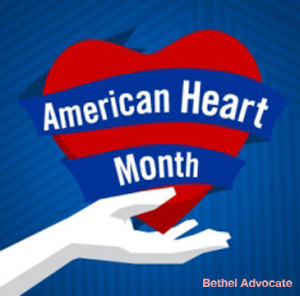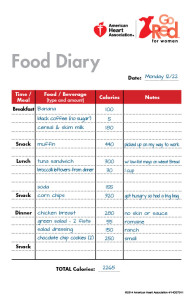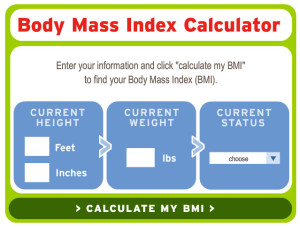
Heart disease can often be prevented when people make healthy choices and manage their health conditions.
On top of this, their heart’s health also depends on other conditions that could be affecting their bodies. For example, if someone is showing leg blood clot symptoms then they need to go to a doctor as soon as possible as the clots could break off and head towards their heart or lungs. This is only going to have negative effects on the body so it shows that looking after your whole body will, in turn, help your heart.
Report by Paula Antolini
February 19, 2015 11:42PM EDT
Heart attacks are not just a man’s disease…
https://www.youtube.com/watch?v=fKpb7qqafV4
Heart disease is the leading cause of death for men and women in the United States. Every year, 1 in 4 deaths is caused by heart disease.
The good news? Heart disease can often be prevented when people make healthy choices and manage their health conditions. Communities, health professionals, and families can work together to create opportunities for people to make healthier choices.
Make a difference in your community: Spread the word about strategies for preventing heart disease and encourage people to live heart-healthy lives.
*****
Scroll over paragraphs below to view links to more information.
Do you know there are seven easy ways to help control your risk for heart disease? Manage your heart risk by understanding “Life’s Simple 7” by Go Red for Women.
1. Get active
Daily physical activity increases your length and quality of life. If you get at least 30 minutes of moderate physical activity each day (like brisk walking), five times per week, you can almost guarantee yourself a healthier and more satisfying life while lowering your risks for heart disease, stroke, and diabetes.
Just make sure that you don’t overdo it when it comes to exercise. If you can, try and monitor your heart rate when you exercise, particularly if you are experiencing issues with your heart. You can find a heart monitor device on sites like https://sonohealth.org/product/ekgraph-portable-ekg-monitor-detect-afib-abnormalities/.
What To Do
Start by learning the basics about fitness. Also, children need 60 minutes a day–every day–of physical activity, so find ways to workout with your kids to help ensure their heart health in addition to your own.
2. Control cholesterol
When you control your cholesterol, you are giving your arteries their best chance to remain clear of blockages. Cholesterol is a waxy substance and our bodies use it to make cell membranes and some hormones, but when you have too muchbad cholesterol (LDL), it combines with white blood cells and forms plaque in your veins and arteries. These blockages lead to heart disease and stroke.
What To Do
Try these tips tolower cholesterol with diet and foods.
3. Eat better
Healthy foods are the fuel our bodies use to make new cells and create the energy we need to thrive and fight diseases. If you are frequently skipping out on veggies, fruit, low-fat dairy, fiber-rich whole grains, and lean meats including fish, your body is missing the basic building blocks for a healthy life.
What To Do
Want more ways to eat better? Try these tips:
• Track what you eat with a food diary• Eat vegetables and fruits
• Eat unrefined fiber-rich whole-grain foods
• Eat fish twice a week
• Cut back on added sugars and saturated fats
Click on image below to view sample food diary.
4. Manage blood pressure
High blood pressure is a major risk factor for heart disease and stroke. When your blood pressure stays within healthy ranges, you reduce the strain on your heart, arteries, and kidneys which keeps you healthier longer.
High blood pressure, also known as hypertension, means the blood running through your arteries flows with too much force and puts pressure on your arteries, stretching them past their healthy limit and causing microscopic tears. Our body then kicks into an injury-healing mode to repair these tears with scar tissue. But unfortunately, the scar tissue traps plaque and white blood cells which can form into blockages, blood clots, and hardened, weakened arteries.
What To Do
To manage blood pressure, you should:
• Eat a heart-healthy diet, which includes reducing sodium
• Get regular physical activity and maintain a healthy weight
• Manage stress, limit alcohol and avoid tobacco smoke.
5. Lose weight
If you have too much fat – especially if a lot of it is at your waist – you’re at higher risk for such health problems as high blood pressure, high blood cholesterol, and diabetes. If you’re overweight or obese, you can reduce your risk of heart disease by successfully losing weight and keeping it off. Even losing as few as five or ten pounds can produce a dramatic blood pressure reduction.
What To Do
Calculate your body mass index (BMI) to help you determine if you need to lose weight.
Click HERE to check your body mass index on a calculator.
6. Reduce blood sugar
Most of the food we eat is turned into glucose (or blood sugar) that our bodies use for energy. Your body makes a hormone called insulin that acts like a carrier to take your food energy into your cells. If your fasting blood sugar level is below 100, you are in the healthy range. If not, your results could indicate diabetes or pre-diabetes.
Although diabetes is treatable and you can live a healthy life with this condition, even when glucose levels are under control it greatly increases the risk of heart disease and stroke. In fact, most people with diabetes die from some form of heart or blood vessel disease.
What To Do
The following tips can all help reduce your blood sugar:
• Reduce the consumption of simple sugars that are found in soda, candy, and sugary desserts
• Get regular physical activity! Moderate-intensity aerobic physical activity directly helps your body respond to insulin
• Take medications or insulin if it is prescribed for you
7. Stop smoking
Cigarette smokers have a higher risk of developing cardiovascular disease. If you smoke, quitting is the best thing you can do for your health. Smoking damages your entire circulatory system and increases your risk for coronary heart disease, hardened arteries, aneurysm, and blood clots. Like a line of tumbling dominoes, one risk creates another. Blood clots and hardened arteries increase your risks for heart attack, stroke and peripheral artery disease. Smoking can also reduce your good cholesterol (HDL) and your lung capacity, making it harder to get the physical activity you need for better health. Even though giving up smoking may not be easy, it isn’t impossible. Whether the transition starts by learning how to smoke shatter (as vaping is said to be a healthier alternative), for example, using nicotine patches or nicotine gum, there are a number of methods that people can try, in the hopes of giving up this bad habit.
What To Do
Whatever it takes for you to stop smoking, it is worth it! Visit the American Heart Association’s Quit Smoking website for tools and resources.
Learn more about “Life’s Simple 7? and take action with MyLifeCheck from the American Heart Association.
*****
Heart problems can effect anyone…
THE HEART OF A DANCER – THE AMERICAN HEART ASSOCIATION
Published on Feb 11, 2015 — Produced, Directed and Edited by David Seth Cohen for the American Heart Association, “The Heart of a Dancer” is the compelling, inspirational and moving true story of Gianna Schupler, a 14 year old heart survivor who was determined to prove that nothing could keep her down.
*****




Leave a Reply